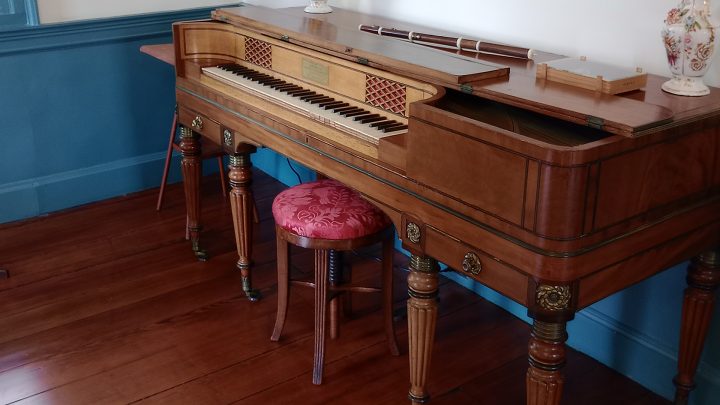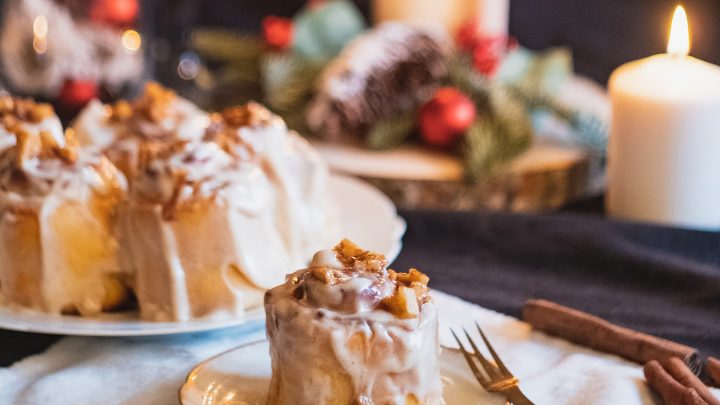Christmas as we know it today was much different in the Regency era, which existed in the early 1800’s to 1820. Most of the historical traditions that have survived throughout the years date back to the Victorian period after the Regency era, which is the rest of the 1800’s through Queen Victoria’s reign until 1901. For this reason, finding true Christmas references dating back to the Regency era is hard to find and very limited. Many of these references refer to books and letters written by Jane Austen and others during this time. The Christmas Regency Calendar While today you might start seeing holiday decorations in stores as early as September and October, during the Regency period people did not begin to celebrate until around advent, the fourth Sunday before Christmas Eve. Some traditions in England and other countries were very localized. This meant that decorations could vary based on their local region. Some may have waited to decorate until Christmas Eve, while others may have chosen to decorate sooner. Others may keep up their decorations for the whole Christmastide, the twelve days of Christmas, which began on December 25th through January 6th. Some even kept up their decorations through February 2nd for Candlemas, or the Feast of the Presentation of Jesus Christ. Decorations Regency homes would not have had any Christmas trees, no Santa Claus or St. Nicholas or reindeer or wrapped gifts. There were no stockings hanging by the fireplace, no snowmen, or Christmas caroling from house to house, or nutcrackers in the sense of what we have today. A Regency Christmas season would have been quite merry with a variety of festivities such as balls, parties, dinners, house parties, card parties and small gatherings. People would have gone out into the cold wilderness of nature and collected holly, ivy, rosemary, evergreen, hawthorn, laurel, box and firs and mistletoe. These evergreens would have been made into boughs, garlands and sprigs to adorn windows, tables, mantles and stairways. They not only provided color to decorate homes, but brought new aromas for the season. While candles are closely associated with the holidays, back then candles and lanterns were the main means of indoor light at evening and at night. However, placing evergreens around the candles brought a festive decoration to the season. Feasts and Desserts The first course for dinner would often be soup. Turtle soup was a popular staple and in order to have enough, the host would need to order a turtle per person. They were most likely imported from the Cayman Islands. Other soups include white soup, which can be thick and creamy. Gravy soup could have ham or beef with a variety of onions and carrots and herbs. Fish was often served such as brile, gudgeons, gellin, crouch, perch anchovy, along with other seafood favorites like scallops and wilks, periwinkles, cockles, mussels, bearbet or hollebet. The main course typically included roast beef and venison and mutton, but other options included goose, capon, pheasant, bustard, swan and/or peacock. They did typically create a stuffy for the fowl. The goose was most popular and affordable for most households until turkey was later introduced by Queen Victoria and Prince Albert in the mid to late 1800’s. The main dish was supported by potatoes, squash, brussels sprouts and carrots. The final course would include Christmas pudding or plum pudding, as it is sometimes called since plums were often the main ingredient. It was traditionally prepared with 13 ingredients to represent Christ and the 12 apostles. The pudding was stirred clockwise, to honor the journey of the Magi and with a wooden spoon in honor of Christ’s manger. Some families would begin their Christmas celebrations with the plum pudding on Stir Up Sunday, the fourth Sunday before Christmas Eve. This would give the pudding time to age so it would be ready to serve at Christmas. Ironically, the name does not come from the amount of stirring required, but instead is based on the Book of Common Prayer dating back to 1549, which begins with “Stir up, we beseech thee, O Lord, the wills of thy faithful people that they, plenteously bringing forth the fruit of good works, may of thee be plenteously rewarded; through Jesus Christ our Lord. Amen.” Other treats during this course included black butter in which there is no actual butter, but preserved fruit similar to apple butter, fruit cake, gingerbread cakes and cookies, mince pie, sugar plums and ginger nuts. For beverages, they typically served wine, or punch and wassail, which consisted of rum, brandy, port, fruit juice, orange, lemons and their rinds and sugar. Of course, recipes varied from family to family and individual preferences. Christmastide Charity During this time, charity was an important part of the season. On St Thomas’ Day (Dec 21st), a day for elderly women and widows went ‘a’thomasing’ at wealthy homes hoping for gifts of food or money. This was in honor of St. Thomas the Apostle. An old song still lingers among our Christmas carols today. Here are some of the familiar lyrics that you might recognize: Christmas is coming and the geese are getting fat, Please spare a penny for the old man’s hat,If you haven’t got a penny, a ha’penny will do,If you haven’t got a ha’penny, God bless you. Boxing Day was often the day after Christmas, also known as St. Stephen’s Day. It has nothing to do with the sport of boxing in the U.S. as we know today. Instead, this was an activity where people would box up gifts for servants or items they no longer needed or wanted and would give these boxes to the poor and needy. Christmas Carols or Hymns While people did not sing traditional Christmas carols at parties and balls and gatherings as we might today, there are some of today’s Christmas carols that date back to medieval times and the Regency period, but they were mostly sung as hymns in church. One custom that dates back to medieval…






